Industry 4.0 Cloud Warfare Center Provides Real-Time Operational Data】Sinhan's 3,000-ping Smart Factory is Opened for the First Time
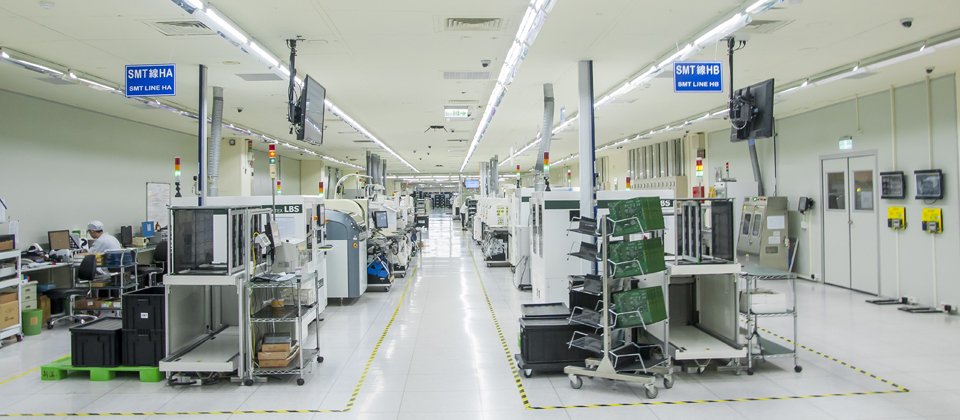
Source:iThome
In mid-October last year, Hsinhan opened a 3,000-ping intelligent factory in the Lin Kou Hua Ya Technology Park, emphasizing that all production processes are automated and intelligent, which not only significantly reduces the workforce, but also improves factory management efficiency. (Photo: Yu Chi-Hao)
Taiwan's oldest industrial computer hardware company, Hsinhan, opened its first Industry 4.0 Smart Factory at the end of last year, and has recently opened its internal details to the public, combining intelligent machinery, industrial Internet of Things and cloud technology to integrate factory OT information and create an automated cloud-based warfare center, which can present factory production and operation information in real time, and help factories increase production efficiency by up to 30% and save more manpower with factory automation and intelligence. It also uses factory automation and intelligence to help factories increase production efficiency by up to 30% and save manpower. With the experience of building this factory, Hsinhan will transform itself from a traditional industrial hardware
OEM to an Industry 4.0 solution provider.
3,000-ping Industry 4.0 Demonstration Factory First Revealed
The Hsinhan Smart Factory is located in the Hwa-Ya Technology Park in Lin Kou, on the 2nd floor of the office building that Hsinhan has leased, covering an area of nearly 3,000 pings. Hsinhan spent $200 million last year and three months to build the first Industry 4.0 demonstration factory, and built two SMT production lines and one DIP production line, which was officially put into production last October, mainly for the OEM production of networking and network security equipment.
From parts preparation, circuit component soldering and DIP insertion, to hardware assembly, function testing and product packaging, all are produced and inspected by automation, together with manual visual inspection.
In addition to automated production, all process machines and testing equipment in Shinhan's factories are fully integrated with IoT sensing technology to obtain real-time operation data from these equipment and then send it back to Shinhan's self-developed cloud warfare center to facilitate managers or decision makers to grasp factory-wide production information in real time. In this cloud warfare center, SHINHAN has integrated 9 application modules and 11 functions, which can realize real-time factory manufacturing information, predictive maintenance, management decision of system 4.0, factory video, information security, network management, facility monitoring, production line monitoring, and power monitoring.
In order to realize industrial IoT applications, Sinhan also adopts an open architecture that allows different machines on the factory line to be connected and interoperable, so that they can detect and adjust the process steps by themselves to improve the process quality. For example, if the IoT device from SPI's solder paste printing inspection machine detects that the thickness of solder paste printing does not meet the specification, it will feed back to the previous process step, and then the printing machine will automatically adjust the offset parameters based on the inspection result to reprint the correct thickness before moving on to the next process.
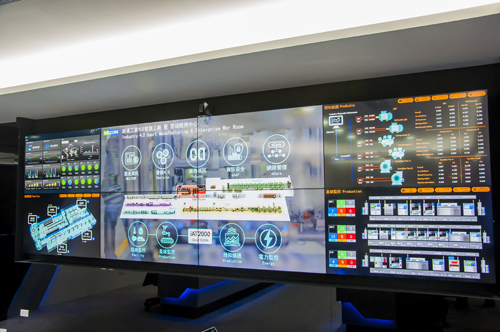
NEXCOM has developed a set of Industry 4.0 Cloud Intelligence Center, which provides 9 application modules and 11 functions to present factory production and operation information details in real time. (Photo: Yu Chi-Hao)
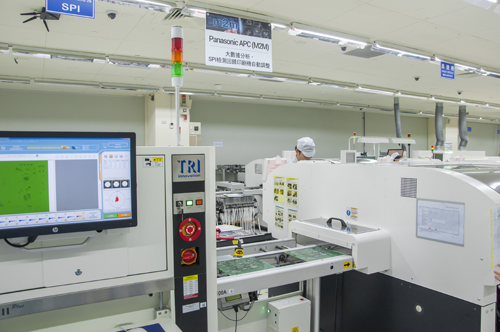
In order to realize the application of industrial Internet of Things, Hsinhan adopts an open architecture that allows different machines on the factory line to be connected and interoperable, and to detect and adjust the process steps by themselves to improve the quality of the process. (Photo: Yu Chi-Hao)
The two keys to the development of Industry 4.0: intelligent machinery, industrial Internet of things.
The first leg is to achieve the intelligent function of machinery through machine, process automation and collaborative robots, while the second leg is the industrial Internet of Things, which allows all intelligent machinery to be connected and interoperable through an open architecture, plus various necessary sensors and devices to collect data from the production line, and send these data to the cloud for analysis and application. It is a complete Industry 4.0 solution. This is the key approach of NEXCOM to build the Industry 4.0 warfare center.
First of all, in the manufacturing line, the warfare center integrates ERP and MES manufacturing execution system, which not only presents the current month's orders and shipment progress on the screen with visual charts, but also presents the information on the MES system, including expected production quantity, target quantity and real-time productivity, which can also be seen on the information boards set up in the assembly area of the production line, so that field managers can grasp the production status more quickly and direct the scheduling on site according to the current production progress of operators.
In order to shorten the operation decision time, NEXCOM also cooperated with National Cheng Kung University to develop a system for management decision making, which can automatically calculate the gross profit cost of products produced on that day based on the material production cost, production work order and operation time, and automatically produce relevant reports, so that we do not need to wait until the report is produced every other month to know, and can immediately revise the operation strategy based on the daily profitability, so that decision makers can make decisions one step earlier. This allows decision makers to make decisions one step earlier. This new system will be developed in June this year.
Secondly, the operation of SMT and DIP production line equipment can be monitored in real time from the screen of the warfare center, mainly by capturing the data and parameters of the machine equipment by means of the machine connection network, so as to present the usage status of these equipment in real time in the warfare center, including the crop rate, furnace temperature and yield rate, etc., which can provide the on-site production line personnel to make immediate parameter adjustments to improve the production yield. In addition, it is possible to monitor the environmental changes of each factory facility at any time, including temperature, humidity, dust and CO2, etc. Moreover, each production line is equipped with multiple cameras, which can present the production status on the screen. This allows the company's top management to view the real-time production status of the factory line even when they are far away from home, and to make immediate adjustments according to the production progress.
In particular, in order to ensure the normal operation of the production line and to avoid serious losses caused by machine failures that interrupt the production line, SHINHAN has also added a preventive diagnostic maintenance mechanism for important equipment in the production line, such as compressors, soldering ovens, scrubber fans, etc. Mainly through machine learning technology, a large amount of training data is collected from the vibration sensors installed on these equipment, and a machine learning prediction model is established to detect the health condition of the equipment.
In addition, the SMT production line area is also equipped with machine information boards, which can show the operation status of various machines on the production line in real time, and in the event of abnormalities, warnings will be issued and displayed on the screen of the warfare center simultaneously. In addition, with the experience of TSMC's production line poisoning incident last year, NEXCOM's new factory has also strengthened the OT information security capability, which can immediately detect whether there is abnormal traffic in the OT network and identify the problematic machine from it, and notify the manager to deal with it immediately in order to avoid infecting other machines.
NEXCOM said that the new intelligent factory has been in operation since October last year, and has helped factories imSprove their production efficiency by at least 20 to 30%.
NEXCOM's bigger goal is to transform from a traditional industrial hardware company to a software and hardware integrated Industry 4.0 solution provider. In addition to intelligent manufacturing, SHINHAN also plans to apply its Industry 4.0 core technologies to various industries, including intelligent medical, intelligent business, and intelligent surveillance.
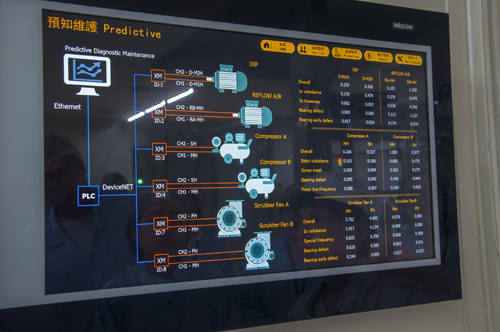
NEXCOM has added a preventive diagnostic maintenance mechanism for important production line equipment, and a machine learning model to predict the health condition of the equipment, so that the plant can be notified in advance for maintenance to avoid production line shutdown without warning. (Photo: Yu Chi-Hao)
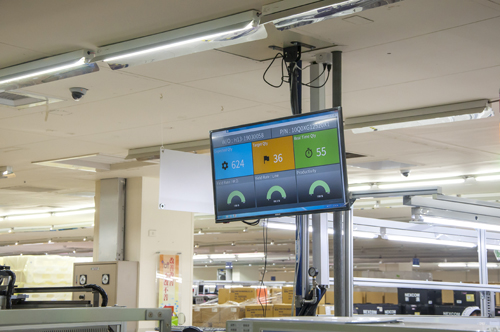
In the assembly area, site managers can view production information on the MES system from the screen panel, including expected production quantities, target quantities, and real-time productivity for faster control of production progress. (Photo: Yu Chi Ho))
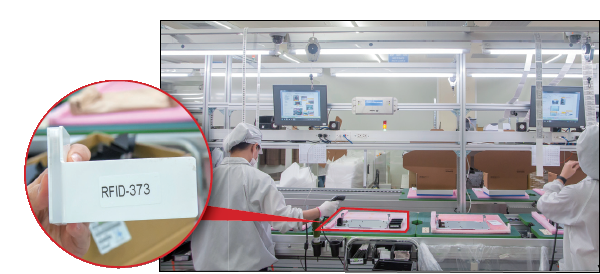
In the final product assembly process, RFID tags are also introduced to automatically sense and record the assembly items completed at each station to replace the action of scanning bar codes with scanners at each station to save the operator's time in changing parts. (Photo / Yu Chi Ho)
